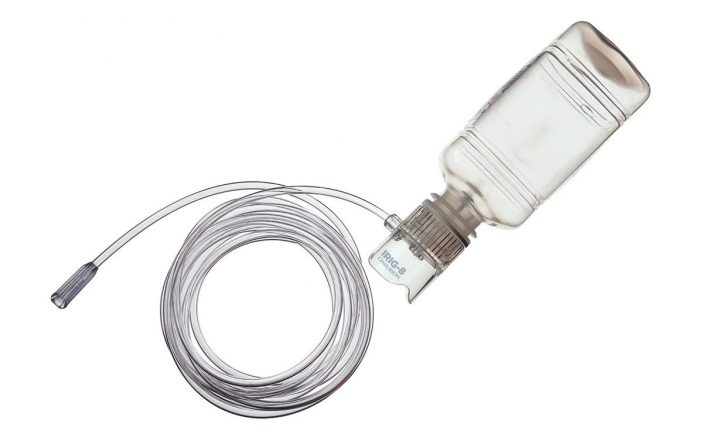The pros and cons of an alternate method to wound irrigation in the ER.
IRIG-8 by Centurion
Video of IRIG-8:
Adequate wound irrigation of acute injuries and lacerations is one of the most frequent clinical scenarios facing emergency medicine providers every shift. The most common technique employed historically is the “fill and flush” method where aliquots of 10-20mLs of saline are repeatedly pulse irrigated into wounds using a syringe and attached IV catheter, prior to closure.
Overall, there is scant literature on the ideal pressure, total irrigation volume and best type of irrigation solution to use for such acute wounds.(1-2) Some studies have shown that 8-12 PSI (pounds per square inch) can be effective at overcoming the adhesive forces of bacteria.(3-5)
In this review, we describe the pros and cons of the IRIG-8 device.6 IRIG-8 can rapidly deliver a consistent, yet adjustable pressure for wound irrigation and has a simple three step method: attach, connect and irrigate (Figure 1a & 1b).
IRIG-8 attaches to the top of a standard 1 Liter bottle of saline/sterile water and comes with 12-feet long tubing that connects to standard compressed air wall units. There is a side finger/thumb hole on the IRIG-8 that allows for on/off flow control. Controlling the PSI is done by setting the flow rate from the compressed air source (Table 1 below).
| Compressed Air Flow Rate | Pressure from IRIG-8 |
| 2.5 L/min | 8 PSI |
| 3.5 L/min | 10 PSI |
| 4.5 L/min | 12 PSI |
Pros:
- Irrigate with 1 Liter to a wound in less than 60 seconds.
- Can be used with one hand.
- Fairly cheap cost at less than $9 per device.
- Adjustable flow rate for wound size and desired PSI.
Cons:
- Needs compressed air source to function; not ideal for a military or deployed setting where this is a precious resource.
- Small cap for shielding provider against splashing fluid.
- Setting the flow rate too high could cause more trauma or drive bacteria deeper into the wound.
Tips when using IRIG-8:
-Wear full personal protective equipment — eye & face shields, gloves and gown!
-Place several absorbent pads around and under the wound and use wall suction, as needed, around the wound to avoid large pools of irrigation fluid

-Three ways to limit splashing of fluids:
- a) Before using the device on a patient, turn on a small amount of compressed air and practice inverting the irrigation bottle up and down to get a feel for the technique.
- b) IRIG-8 can be used with one hand, so providers can use their other hand to cover the top of the bottle.
- c) When in use, keep the device close (a few centimeters) to the wound surface.
References:
- Gabriel, A. Wound Irrigation. https://emedicine.medscape.com/article/1895071-overview#a1. 2017 Dec.
- Chatterjee JS. A critical review of irrigation techniques in acute wounds. Int Wound J. 2005 Sep. 2(3): 258-65.
- Chisholm CD, Cordell WH, Rogers K, Woods JR. Comparison of a new pressurized saline canister versus syringe irrigation for laceration cleansing in the emergency department. Ann Emerg Med. 1992 Nov. 21(11): 1364-7.
- Longmire AW, Broom LA, Burch J. Wound infection following high-pressure syringe and needle irrigation. Am J Emerg Med. 1987 Mar. 5(2):179-81.
- Singer AJ, Hollander JE, Subramanian S, Malhotra AK, Villez PA. Pressure dynamics of various irrigation techniques commonly used in the emergency department. Ann Emerg Med. 1994 Jul. 24(1): 36-40.
- Crill, EK, Marriott I. In vitro efficacy testing of a novel high-pressure wound irrigator. Am J Emerg Med. 2015 Oct. 33 (10): 1534–1535.



